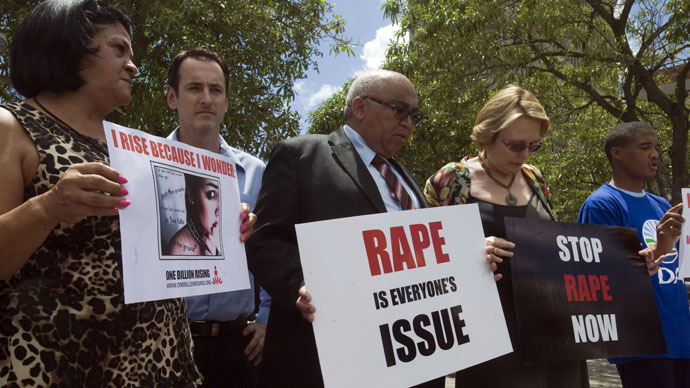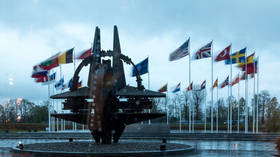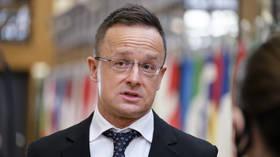Blade runner killing and the media blackout

After decades of indifference from America's infotainment industry, imagine my surprise to hear TV anchors like Megyn Kelly of Fox News allude to the killing fields of South Africa.
South Africa should be in the news every day. It isn't. Scant
few among the West's Yellow Press care to chronicle the country's
favorite blood sport: murder. The Afrikaners, in particular —
arguably that country's founding people — are being killed off at
genocidal rates with nary a murmur from the media — although the
same crowd is on the scene to report on Nelson Mandela's every
wheelchair-bound move.
According to Genocide Watch, South Africa — under the African
National Congress — is now at stage 6 of the 8 stages of
Genocide. However, were it not for a little-known, heroic Internet
journalist (cited "Into the Cannibal's Pot: Lessons for America
from Post-Apartheid South Africa"), few would know who the victims
of this racial onslaught are and how they die.
Soon jurist Alan Dershowitz was chiming in about "how dangerous" life in South Africa
was. Dershowitz even denigrated the country's judiciary as
"a very politically correct
judiciary," "filled with people from the ANC and supporters of the
ANC"; most certainly "not
one of the finer judiciaries in the world."
A subject that had been submerged since 1994 — the ramshackle state
of post-apartheid South Africa — was suddenly being raised, if in
veiled terms.
The reason for the heightened awareness among the criminally
comatose is Blade Runner Oscar Pistorius’ run-in with the law. The
Olympian amputee killed his girlfriend, model Reeva Steenkamp, in
what he contends was a case of mistaken identity. This being South
Africa, the crime scene in suburban Pretoria is rumored to have
been contaminated by the new and notorious South African Police
Services. And the prosecutor has overreached, charging Pistorius,
who has no priors, with premeditated murder.
The high-profile murder is PC and TV perfect for a left-liberal
media, in South Africa and beyond, that wish to peddle the myth of
"colorless" crime in South Africa. It is no such thing. In the
aggregate, violence in the Rainbow Nation — more appropriately
called the “Rambo Nation” — is unidirectional: black on black and
black on white. Violence against women generally flows in the same
direction. Considering, moreover, that the country now has one of
the world’s highest murder rates and lowest conviction rates, a
South African thug can safely pursue his vocation without fearing
the consequences.
South African authorities, universities and think tanks no longer
provide information about victimization patterns by race of victim
and offender. Nevertheless, in the research for my book I uncovered data according to which, at
76.6 percent of the population, blacks committed 76.4 percent of
“intimate femicides” (defined as “the killing of a female person by
an intimate partner”). And they committed 68.3 percent of
“non-intimate femicides”: “the killing of a woman by someone other
than an intimate partner.”
Whites have proven woefully inadequate to the task of filling their
pro-rata crime quotas (page 38). At less than nine percent of the
population and dwindling, the corresponding numbers for white South
Africans were 3.9 and 2.6 percent respectively.
With respect to incarceration rates, whites "underperformed" again.
According to the South African Department of Correctional Services,
113,773 criminals had been sentenced as of June 2008, of whom only
2,190 were white. Whites make up only 1.9 percent of the number of
sentenced criminals.
Weighing in with 90,013 sentenced individuals — approximately 79.1
percent of the total number of criminals sentenced — blacks more
than filled their per-population crime allotment.
This high-profile celebrity case involves a class of people —
wealthy white South Africans — whose role in the country's violent
crime is statistically insignificant. Trust a hypocritical media to
turn a statistical outlier, an anomaly, into a perfect foil for the
continued blackout on the color of crime in South Africa.
The incontinent gushing over Pistorius has given way to
condemnation. Paranoid about security is how the athlete's
“obligingly stupid” journo friends are now labeling him. They had
only ever jetted in from low-crime or no-crime countries for an
interview.
More at home among the international glitterati, Oscar Leonard Carl
Pistorius is no Afrikaner “everyman,” says activist Dan Roodt, who
is such a man. Even so — and for all his privilege — Pistorius
knows the rapacity and invincibility of the criminal class in his
country. Like every other Afrikaner, he knew in his gut what
infiltrating gangs would do to a legless Boer. He had seen images of the mangled bodies.
Perhaps Pistorius will speak up.
The statements, views and opinions expressed in this column are solely those of the author and do not necessarily represent those of RT.
The statements, views and opinions expressed in this column are solely those of the author and do not necessarily represent those of RT.













